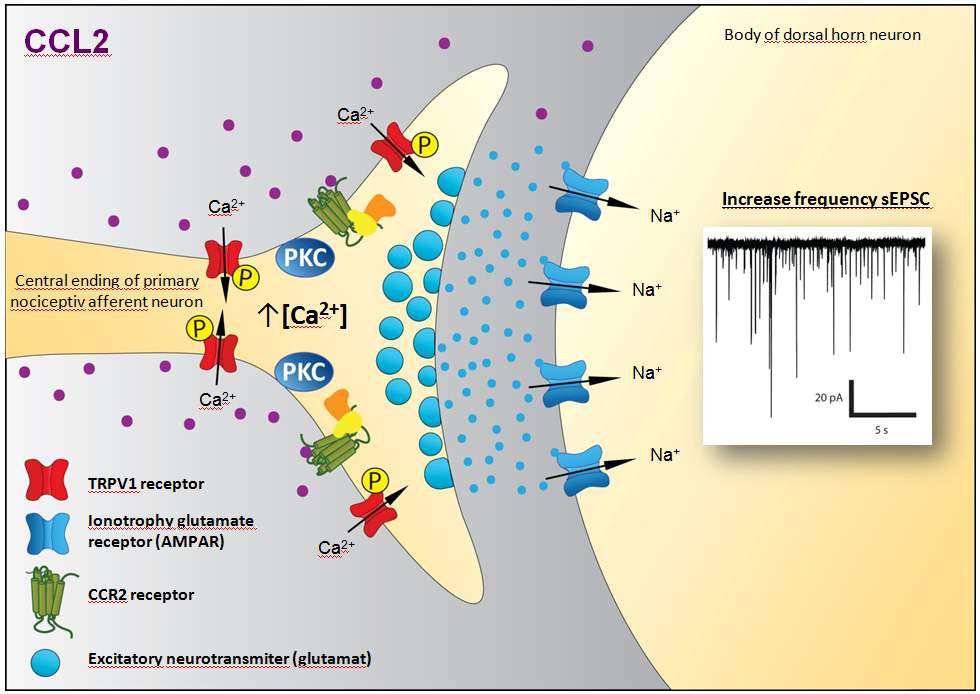The role of spinal TRPV1 receptors in CCL2-induced hyperalgesia
Modulation of nociceptive synaptic transmission in the spinal cord is implicated in the development and maintenance of several pathological pain states. The chemokine CCL2 (C-C motif ligand 2) was shown to be an important factor in the development of neuropathic pain after peripheral nerve injury, when it may be released from the central endings of primary nociceptive neurons in the spinal cord dorsal horn.
In our experiments we tested our hypothesis that the effect of CCL2 on synaptic transmission may be partially mediated by spinal TRPV1 (transient receptor potential vanilloid 1) receptors. Intrathecal drug application in behavioral experiments and patch-clamp recordings of spontaneous, miniature and dorsal root stimulation evoked excitatory postsynaptic currents (sEPSC, mEPSC, eEPSC) from superficial dorsal horn neurons in acute rat spinal cord slices was used. Intrathecal application of CCL2 induced thermal hyperalgesia and mechanical allodynia, while TRPV1 receptor antagonist SB366791 pretreatment diminished the thermal but not the mechanical hypersensitivity. In patch-clamp recordings CCL2 bath application induced an increase of the sEPSC and mEPSC frequencies and eEPSC amplitude that was diminished by SB366791 pretreatment.
Our results demonstrate that the activation of spinal TRPV1 receptors plays an important role in the modulation of nociceptive signaling induced by CCL2 application.

Špicarová, Diana - Adámek, Pavel - Kalynovska, Nataliia - Mrózková, Petra - Paleček, Jiří . TRPV1 receptor inhibition decreases CCL2-induced hyperalgesia . Neuropharmacology 2014, roč. 81, jun, p. 75-84. ISSN 0028-3908. IF = 5.106
